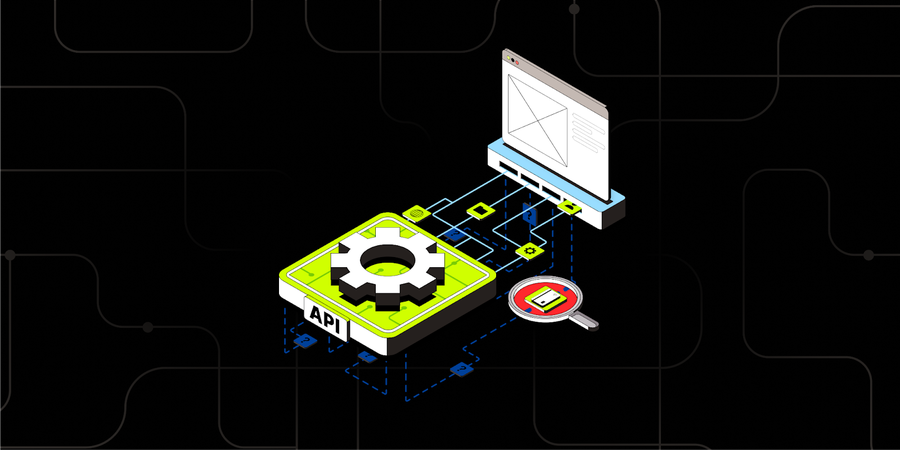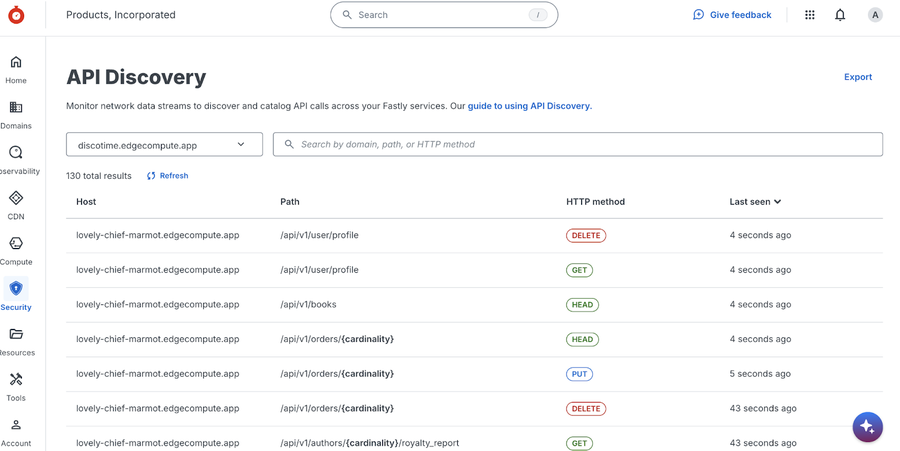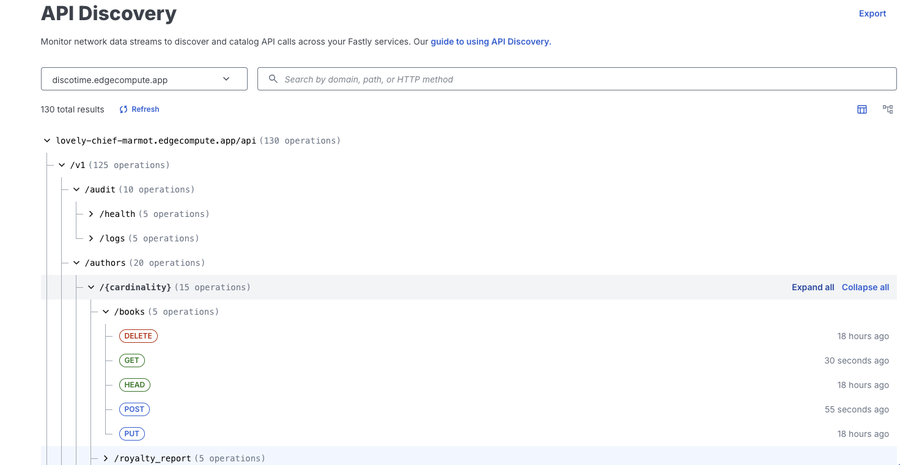Tu catálogo de API acaba de recibir una actualización

Senior Product Marketing Manager, Security

Gerente de producto técnico

El 30 de septiembre lanzamos API Discovery, que te ayuda a descubrir, supervisar y proteger tus API con facilidad. Supervisa continuamente el tráfico de tus API en la amplia Edge network de Fastly para crear una instantánea continua de tus API y mantenerte al tanto de cualquier petición de API nueva, actualizada o inesperada que llegue a tu origen.
API Discovery te ayuda con el primer paso importante: saber lo que no sabes. ¿Pero qué ocurre una vez que has hecho una lista y la has revisado dos veces? Sabemos que gestionar una lista larga de API puede resultar opaco y que requiere mucho tiempo. Los desafíos se dividen en tres categorías principales.
Problema n.º 1: Hay demasiadas API
Si te encargas de gestionar las API de tu organización, esto no es ninguna sorpresa. Cuando hay muchas API que gestionar, puede resultar difícil encontrar los puntos finales de API específicos que estás buscando en una lista activa que puede contener cientos o miles de entradas.
Problema n.º 2: Hay nuevas API todo el tiempo
Algunas API son más antiguas y otras más nuevas. Es fácil distraerse con lo nuevo y urgente, pero no puedes ignorar la información crítica que surge en el tráfico de la API hacia las aplicaciones antiguas o descuidar la inspección del tráfico hacia los entornos de prueba. Es difícil encontrar tiempo para prestar suficiente atención a las API más antiguas que necesitas gestionar cuando hay otras nuevas que se acumulan constantemente por encima.
Problema nº 3: Las relaciones entre las API son importantes
Las API no existen en el vacío. Comprender las conexiones entre las aplicaciones de tu organización es crucial para entender la realidad de tu panorama de API. Simplemente mirar una lista de lo que existe no es suficiente; necesitas poder interpretar lo que ves en el contexto del negocio en el que te encuentras. Por ejemplo, podrías usar la información en la ruta de las API para entender a qué recursos se hace referencia y dónde existen dentro de otra aplicación o microservicio, construyendo un mapa mental de cómo se procesan las peticiones dentro de tu ecosistema.
Por eso hemos desarrollado nuestra seguridad de API para que sea intuitiva, de modo que puedas navegar por tu catálogo de API, mostrar aquellas API menos frecuentes pero no menos críticas, y visualizar cómo se conectan tus API a sus recursos subyacentes.
Aquí tienes un ejemplo. Alguien que use API Discovery podría ver cómo las llamadas a la API desconectadas suben a la parte superior de su tabla de API Discovery. Podría ser algo así:

(Figura 1: Vista de la tabla de descubrimiento de API)
Este es un resumen sencillo de las llamadas a la API, ordenadas en orden cronológico inverso por la marca de tiempo de la última petición coincidente. Contiene mucha información útil, como la recencia relativa y la navegabilidad. Esto te ayuda a identificar y revisar las peticiones API más frecuentes al origen. Cuando sabes lo que buscas, es fácil encontrar todo gracias a las opciones de búsqueda y clasificación.
Sin embargo, a veces necesitas ver otra información relevante. ¿Qué otras API relacionadas con el autor se han descubierto? ¿Añadimos regalías con la API de autores, la API de libros o la API de usuarios? ¿Cuántas API de la versión 1 no han llegado aún a la versión 2? ¿Sigue existiendo en algún lugar esa API de creación de registros obsoleta y costosa? ¿Podemos desactivarla?
Estas preguntas se refieren a la relación entre tus API y tus recursos subyacentes. Esto se complica aún más si tenemos en cuenta la complejidad de los entornos de producción típicos: más hosts, más entornos, más versiones, más API, más caos. Cuando necesites comprobar cómo encajan tus API en el panorama general, necesitarás un poco más.
Por eso, nuestra oferta de productos es una visión más amplia de tus API descubiertas, a las que llamamos vista en árbol:

(Figura 2: Vista de árbol de API)
(Vaya, parece que tendremos que esperar para desactivar ese punto de creación de registros por ahora.)
Cuando las API se organizan en vista de árbol, aparecen dentro de la jerarquía general de recursos. Esto facilita la navegación por la colección y da sentido al caos, porque la colección en sí se alinea, no con un estándar arbitrario, sino con cómo se definen, implementan y alojan estas API dentro de tu propia arquitectura. La vista en árbol simplemente refleja el contexto que ya has creado en tus servicios y refleja la realidad viva de cómo encajan los sistemas.
¿Y si alguien de tu equipo implementa algo nuevo fuera de tus convenciones típicas de modelos de datos? API Discovery facilitará tu búsqueda, porque destacará del resto. Detectarás el problema rápidamente y lo abordarás antes de que se convierta en un gran dolor de cabeza para el soporte.
En pocas palabras, puede ser difícil ver el bosque por los árboles, pero es más fácil con la vista de árbol.
¿Listo para probar API Discovery? Se activa fácilmente con un solo clic. Consigue visibilidad instantánea, reduce el ruido y mantén tus API seguras, sin complicaciones. Míralo en acción con una demostración personalizada o chatea con nuestro equipo de expertos en seguridad para ver lo que Fastly puede hacer por ti.